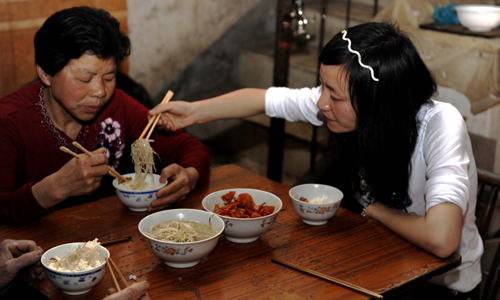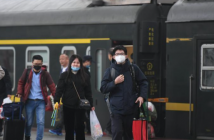“Want to share a pizza? Want a bite of my cake? Want to try a sip of my cocktail?” Growing up I’ve always shared my food. It doesn’t matter whether I’m at a Chinese restaurant where everything is served family-style or a Western one where everyone orders their own plates. Everything gets shared around the table, whether they were designed that way or not. I’ve always found that it lets you try different dishes without stuffing yourself. And if you’re dining within close proximity of one another, chances are you’re probably sharing your germs with or without that extra bite from their plate anyway.
But ever since COVID-19, dining just hasn’t been the same, especially here in China. Nowadays, whenever I go anywhere in Beijing there’s always a packet of tissues, disinfectant wet wipes, and some type of liquid hand sanitizer. COVID-19 has made us all suspicious of where one another has been and what germs are still lingering on surfaces.

Showing affection without speaking a word
When my local Beijinger husband and I first started dating one of the cultural differences that would always bother me on dates was when he would put food on my plate for me. “Don’t tell me what to eat! If I wanted to eat it, I’d get it.” I’d always think to myself. But after a while I realized that it wasn’t the overly controlling chauvinistic male tendency that I thought it was, it was a gesture of love and respect, a common way people here show affection at dinner tables. It’s something that’s done for elders at the table, spouses, children, and when it’s a business meal occasions, for your boss.
Before COVID-19 I didn’t think much of it anymore when someone puts food on my plate. But again, since February, the idea that a pair of chopsticks that’s been in someone else’s mouth touches food that’ll later go in my mouth is just plain gross.
Since the SARs outbreak back in the early 2000s the Chinese government encouraged the use of serving spoons, or two sets of chopsticks (one for serving, one for eating) but they were only offered at the more high-end restaurants. Smaller restaurants and mom and pop shops tried to keep their cost low, and the fewer utensils they had to use, means the fewer hours they had to spend cleaning them afterward. However, that may finally change as Chinese restaurants are now actually required to always provide service spoons and chopsticks (though there are still places that won’t do it unless you request it).

A typical Chinese table setting, before the pandemic
During the beginning of the social distancing restrictions, restaurants also faced more complaints from diners who were asked to separate their large groups into different tables, as It wasn’t something we were used to yet. But amidst this new wave of outbreaks and the return of social distancing dining restrictions, Beijing restaurant-goers are holding back their complaints. By now, we just want to do our part and get this whole COVID-19 nightmare over with.
It seems highly unlikely that Chinese dining culture is going to change so much that family-style sharing becomes a thing of the past completely, but we do have to keep adapting to smaller changes. The latest wave of COVID-19 infections now means that Beijing’s dining scene is back to restricting the number of diners per table and the distance between tables. This past week restaurants in Shine Hills in Shunyi along with restaurants in Taikoo Li closed to test their staff. So until further notice, before you make weekend plans or dinner plans with friends and family, call ahead and see what the restrictions at your favorite restaurants are and whether they’re even still open.
KEEP READING: Sanlitun Bars and Restaurants Close for Mass COVID-19 Testing of Staff
Photos: unsplash, behance.net, jd.com




